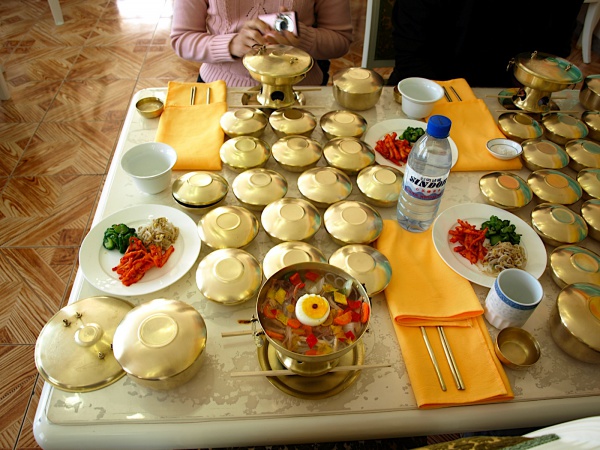Facts About Bangjja
Bangjja, also known as yugi, is a distinct variety of hand-forged bronzeware from Korea, featuring dishes, bowls, spoons, and chopsticks. What truly sets Bangjja apart is its high tin content, which significantly enhances its sterilization properties compared to other bronzewares. This distinctive quality has made Bangjja a favored choice for royal tableware in Korea, particularly for serving traditional Korean court cuisine. In 1983, South Korea designated Bangjja as an Important Intangible Cultural Property.
Bangjja boasts a rich history that extends back to the Bronze Age. Over the centuries, it has been shaped by various cultural exchanges, notably with China during the Goryeo and Joseon dynasties. Despite facing challenges such as the Korean War and shifting consumer preferences, Bangjja has experienced a resurgence in recent years. People value its ability to stay hygienic, retain heat, and its overall durability.
The creation of Bangjja involves a specialized process. Artisans use a precise alloy of copper and tin, repeatedly heating and hammering the material. The specific tin-to-copper ratio of 78:22 is critical in imparting Bangjja with its unique characteristics, including strength and an appealing finish. This intricate process relies on traditional techniques passed down through generations, requiring skilled craftsmanship to achieve the high-quality standards of Bangjja.
Today, Bangjja brassware is esteemed not only for its durability and aesthetic appeal but also for its hygienic properties and heat retention. While commonly used for tableware, it is also admired for artistic purposes and even in the creation of musical instruments. The craftsmanship and allure surrounding Bangjja make it a treasured cultural symbol in South Korea. Artisans such as Lee Bong-Ju continue to preserve this tradition, showcasing their remarkable work at venues like the Dae-Gu Bangjja Brassware Museum.

 North Korea
North Korea